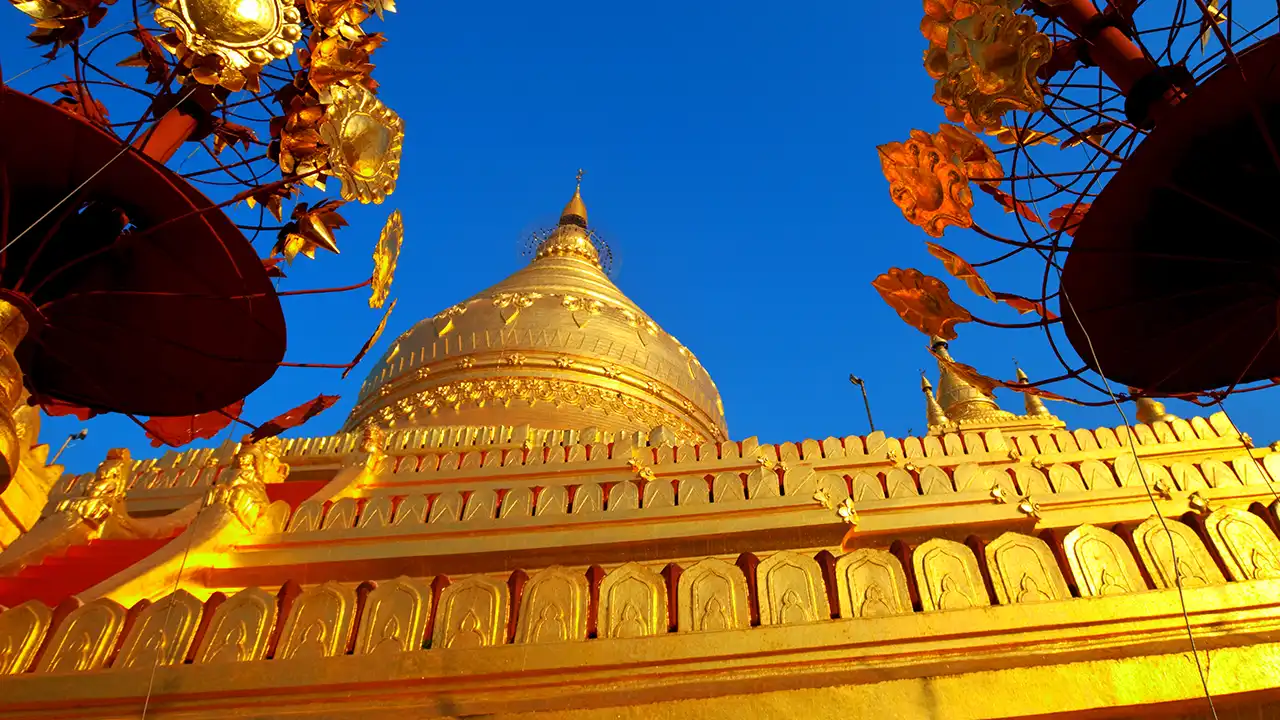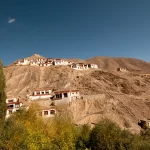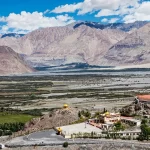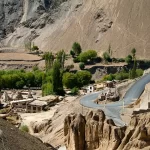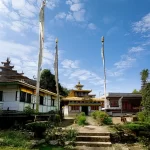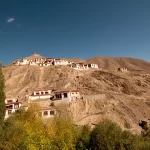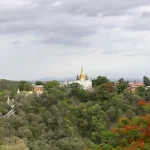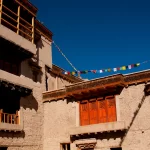Situated in Bylakuppe’s lush, serene landscapes of Karnataka, southern India, Namdroling Monastery is an unexpected treasure of Tibetan culture and Buddhist dspirituality. Established far from Tibet’s white mountains, this monastery is a beacon symbol of faith, perseverance, and the global journey of a scattered tradition. It’s not only a religious school and place of practice but also a cultural icon that attracts visitors from across the globe, all in pursuit of peace, beauty, and wisdom about one of the world’s oldest spiritual traditions.
Origins: A Spiritual Vision in Exile
The history of Namdroling Monastery starts with a painful chapter in recent Tibetan history. Tibet was crushed ruthlessly in 1959 after the uprising against Chinese occupation. Thousands of Tibetans, including high-ranking lamas, monks, and laymen, fled over the Himalayas to India. Among them was His Holiness Penor Rinpoche, the 11th throne-occupying incarnation of the Palyul lineage of the Nyingma school, the oldest order of Tibetan Buddhism.
In 1963, Penor Rinpoche established Namdroling Monastery on donated marshy land given by the Indian government. A small bamboo hut grew, over the decades, into the biggest teaching institution of the Nyingma tradition outside Tibet. The monastery is now the residence of over 5,000 monks and nuns, who reside, study, and practice on its serene grounds.
Architectural Grandeur: A Melange of Devotion and Creativity
Namdroling’s natural scenery is nothing short of stunning. As one approaches the monastery, the first thing one notices is the Golden Temple, or the Padmasambhava Buddhist Vihara. The temple’s facade is crowned with gilded roofs that glint in the southern sun, bordered by intricately carved columns and vibrant Tibetan motifs. The air is instantly soothing, filled with the aroma of incense and the gentle hum of prayers.
Inside, the opulence persists. The central prayer hall contains three giant statues, each more than 40 feet tall: Guru Padmasambhava, the Second Buddha and founder of Tibetan Buddhism in the 8th century; Buddha Shakyamuni, the historical Buddha; and Amitayus, the Buddha of Infinite Life. These statues are not ornaments—they are packed with sacred texts, relics, and herbal medicines, said to radiate blessings and spiritual energy.
Walls are lined with intricate thangka paintings, which illustrate tales from Buddhist scripture and lessons from the lives of awakened beings. The paintings serve not just as decoration but as meditation and worship, each image carefully laid out to teach philosophical ideas and spiritual lessons.
Daily Life at the Monastery
Living at Namdroling is a harmonious integration of contemplation, study, and community. The monks start their day early with chanting and meditation, and then they spend extensive hours at the Ngagyur Nyingma Institute, which is a high-level center of Buddhist learning. At the institution, the students learn classical Tibetan literature, philosophy, grammar, logic, metaphysics, and ritual arts. The training period may extend to nine years, and most of them become teachers and spiritual mentors all around the globe.
Namdroling also maintains higher tantric studies at the Tsepal Tobkyed Dratshang as well as long-term retreat facilities at the Samten Tse Retreat Center, where adherents can intensify their meditation in silence and solitude.
No less significant is the monastery’s nunnery, Tsogyal Shedrub Dargyeling, which was founded to give women equal access to religious training and experience. Over 1,000 nuns live and study there, helping to pass on the all-encompassing nature of Tibetan Buddhism.
Despite the stern discipline, the monastery is full of life and cheer. Novice monks can be seen playing in recess, red robes fluttering as they chuckle and sprint around one another. Visitors often comment on the warm hospitality and the feeling of peace that seems to pervade the entire campus.
Cultural Festivals and Rituals
Namdroling comes alive during the celebrations, mainly Losar, the Tibetan New Year, in exquisite rituals, dances, and prayers. The most famous among them is the Cham dance, in which masked monks perform spiritual steps to rid themselves of evil spirits and bring in goodness. Set against the background of the rhythmic thumping of drums and blast of traditional trumpets, the dances are at once a show and a ritual.
Another of the largest annual events is the Guru Rinpoche Drupchen, which is a multi-day tantric ceremony that calls on the blessings of Padmasambhava. The monastery is resounding with chanting, and ritual sand mandalas are created and then ritually dismantled—symbolizing the transience of life.
A Beacon for Global Visitors
Although primarily a monastery of a religious nature, Namdroling Monastery is also a place of pilgrimage and spiritual retreat for tourists. People of all faiths and origins are welcomed, provided they approach in humility and respect. Many are attracted as much by the beautiful architecture as the serene atmosphere that pervades the region.
Bylakuppe, the location of the monastery, is also one of India’s largest Tibetan settlements, and a visit to the region provides additional cultural exposure. There are local shops selling authentic Tibetan items like prayer flags, singing bowls, incense, and handcrafted jewellery. Tourists can indulge in Tibetan food like Thukpa (noodle soup), momos (dumplings), and sweet butter tea at small restaurants operated by local families.
A few visitors opt to spend several days or even weeks volunteering at the monastery or participating in public lectures by senior lamas. These are perfect moments to be fully immersed in the teachings and way of life of Tibetan Buddhism.
Maintaining Identity Through Belief and Education
In so many respects, Namdroling Monastery is more than just a place of worship. It is a living repository of an exiled culture. It is a learning center, a refuge for pilgrims, and a testamentary force that even in the midst of political turmoil and displacement, traditions can endure and thrive.
Through its schools, retreats, and cultural outreach, Namdroling ensures Tibetan Buddhist philosophy is taught with authenticity and depth, not just in India but throughout the world. Its monks and nuns travel to Europe, North America, and Southeast Asia periodically to lead teachings and retreats, forming an international bridge of wisdom.
A Journey Worth Taking
In today’s world, with its frenetic pace and materialism that seems to drown out the spiritual, Namdroling is a reminder of an alternative lifestyle—one rooted in compassion, understanding, and mindfulness. It is not a location; it is an experience that speaks to the soul.

